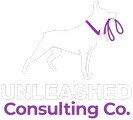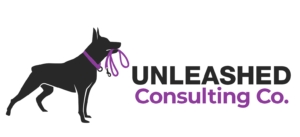Lead generation is the art and science of sparking interest in your products or services, an important step in any successful marketing strategy. Imagine having a pool of potential customers who are genuinely curious about what you offer. That’s the power of lead generation!
By capturing their attention and drawing them into your marketing system, you can nurture these leads, guiding them through a personalized journey that meets their needs and builds trust in your brand.
Once a lead shows interest, you have the opportunity to educate them about your offerings, highlighting the unique benefits and solutions your products or services provide. This is your chance to engage, inform, and build a relationship with each potential customer.
As they learn more and become convinced of the value you offer, the path to conversion becomes clear. Lead generation tool isn’t just about increasing numbers; it’s about creating meaningful connections that turn curiosity into commitment and prospects into loyal customers.
By mastering lead generation, you open the door to endless possibilities for growth and success, transforming interested visitors into enthusiastic brand advocates.
So, get ready to captivate, educate, and convert, making each lead a stepping stone toward your business’s bright future.
What is a Lead?
A lead is someone who shows interest in a company’s product or service. Unlike receiving an unexpected cold call, leads typically initiate contact by providing their personal information for an offer, trial, or subscription.
For example, with inbound lead generation, if you take an online survey about car maintenance, you might receive an email from the auto company that created the survey a day or so later. This approach is far less intrusive than a random phone call.
From the business’s perspective, the information gathered from your survey responses helps them tailor their communication to address your specific needs and problems. This personalized approach makes the interaction more relevant and helpful to you.
Leads are an important part of the process of turning visitors into customers, especially with B2C and B2B lead generation. However, not all lead gen are the same.
A lead scoring and lead capture vary based on how they are qualified and what stage of the lifecycle they are in. Lead capture forms play a significant role in this process. This means businesses can better understand where each lead magnet is in their journey and how to best engage with them.

Lead Generation Meaning
Lead generation is the process of attracting and capturing interest in a product or service to develop a sales marketing campaign, build brand awareness, digital marketing, marketing automation, and outbound lead generation.
Marketers, especially those in B2C (business-to-consumer), use several channels to attract leads and improve their online lead generation conversion rates. These channels include:
- SEO (Search Engine Optimization): Optimizing your website and content to rank higher in search engine results, making it easier for potential leads to find you.
- Paid Ads: Using online advertisements to different lead and target specific audiences and drive traffic to your website or landing pages. B2B companies often use LinkedIn for this.
- Social Media: Engaging with potential leads on platforms like Facebook, Instagram, and Twitter to build awareness and interest in your products and services. LinkedIn is also a key platform for B2B companies.
- Email Marketing: Sending targeted emails and fill out a form to potential leads who have expressed interest in your offerings. Tool like lead capture forms can be very effective here.
- Landing Pages: Creating dedicated web pages designed to capture lead information through forms or special offers.
However, these channels don’t always deliver the desired results. You might spend a lot of time creating content, hoping to attract the right leads, only to find that the results are disappointing. This can be discouraging for marketers who put in significant effort without seeing a return.
To overcome this, it’s important to continuously optimize your lead generation strategies. Experiment with different approaches, analyze your results, and adjust your tactics accordingly. That’s where lead generation tools can be beneficial. By doing so, you can improve your chances of attracting the right leads and ultimately boosting your conversion rates.
Different Types of Leads: What is Marketing Qualified Leads (MQL) vs. Sales Qualified Leads (SQL)?
Marketing Qualified Leads (MQL) are people who have shown interest in your product or service but aren’t ready to buy yet. B2B marketers aim to nurture these leads effectively. They might have done things like download a guide, signed up for a newsletter, or attended a webinar. These actions show they’re interested but not ready to make a purchase.
Sales Qualified Leads (SQL) are people who have moved further along and are ready to buy. They’ve shown clear signs that they want to purchase, and the sales team has confirmed this through more detailed interactions. SQLs are high-quality leads, ready for direct sales efforts, and are more likely to become customers.
Understanding the difference between MQLs and SQLs helps businesses with their sales and marketing.
Marketing teams can nurture MQLs by providing more information and engagement, while sales teams can work on converting SQLs into customers.
Why Do You Need Lead Generation Strategies for Your Marketing Strategies?
Lead generation is important for businesses because, without leads, there are no sales and no revenue. While companies have various process of attracting prospects, many of them focus on generating leads. Effective and successful lead nurtures interested prospects, turning them into loyal customers and brand ambassadors.
A lead generation marketing is important because it improves lead quality question: “What does your potential customer want?”
By answering this question and linking it to a high-converting landing page, you can consistently generate leads for your business. Although turning a lead into a customer takes further effort, having a full sales pipeline makes it easier to refine your sales strategies and achieve success.
How to Start a Lead Generation Process?
Starting a lead generation process involves a few key steps to attract and capture potential customers. B2B marketers particularly find this crucial. Here’s how to get started:
- Identify Your Target Audience: Understand who your ideal customers are. For B2B companies, leveraging LinkedIn can be especially fruitful. Research their needs, preferences, and behaviors to create detailed buyer personas.
- Create Valuable Content: Develop content that addresses the interests and pain points of your target audience. This could be blog posts, videos, eBooks, webinars, or infographics.
- Optimize Your Website: Ensure your website is user-friendly and optimized for search engines (SEO). Include clear calls-to-action (CTAs) and easy-to-find contact forms. Successful lead generation often depends on the effectiveness of these elements.
- Use Multiple Channels: Promote your content and offers through various channels like social media, email marketing, paid ads, and SEO to reach a wider audience.
- Set Up Landing Pages: Lead capture forms are essential to convert visitors into leads. Create dedicated landing pages for your offers. These pages should have compelling headlines, clear descriptions, and simple forms for visitors to fill out their information.
- Offer Incentives: Provide incentives like free trials, discounts, or exclusive content to encourage visitors to share their contact details.
- Nurture Leads: Once you have captured leads, follow up with personalized email campaigns and targeted content to nurture them through the buying process.
- Analyze and Optimize: Regularly review your lead generation efforts. Use analytics to track performance and make data-driven adjustments to improve your strategy.
By following these steps, you can effectively start and manage a lead generation process that attracts and converts potential customers.
How to Generate Leads for Your Pet Service Business
Generating leads for your pet service business is important to attract new customers and grow your clientele. Here’s a simple guide to help you get started:
1. Identify Your Target Audience
Begin by understanding who your ideal customers are. Are they pet owners looking for grooming services, dog walking, or pet sitting? Successful lead generation involves understanding these needs. Knowing your audience helps tailor your marketing efforts effectively.
2. Create a Professional Website
Your website is often the first impression potential customers have of your business. Ensure it’s user-friendly, visually appealing, and provides all necessary information about your services. Include clear calls-to-action (CTAs) and easy-to-find contact forms.
3. Use Social Media
Social media platforms like Facebook, Instagram, and Twitter are excellent for reaching pet owners. Share engaging content such as pet care tips, client testimonials, and behind-the-scenes looks at your services. Use hashtags and participate in local groups to increase your visibility.
4. Offer Valuable Content
Create content that pet owners find useful. This could be blog posts on pet care, videos demonstrating grooming techniques, or downloadable guides on pet health. Offering valuable content positions you as an expert and builds trust with your audience.
5. Use Paid Advertising
Consider investing in paid ads on Google or social media. These ads can target specific demographics, ensuring your services are seen by those most likely to need them. Use eye-catching images and clear, compelling messages to attract attention.
6. Host Events and Workshops
Organize events like pet care workshops, training sessions, or adoption days. These events not only showcase your expertise but also provide an opportunity to connect with pet owners in person. Collect contact information from attendees for follow-up marketing.
5 Proven Lead Generation Hacks for Pet Business Owners
1. Use Social Media Contests and Giveaways
Running contests and giveaways on platforms like Facebook, Instagram, and TikTok can quickly generate buzz and attract new leads. For example, you can offer a free pet grooming session or a basket of pet goodies. Make sure to ask participants to follow your page, like the post, and tag friends in the comments to enter.
2. Create Valuable Content and Use SEO
Develop high-quality blog posts, videos, and infographics that address common pet care questions and concerns. Optimize your content for search engines (SEO) to attract organic traffic. Topics could include pet training tips, health advice, and product reviews. This not only drives traffic but also establishes your authority in the pet industry.
3. Implement Referral Programs
Encourage your existing customers to refer friends and family by offering incentives such as discounts, free services, or exclusive products. A well-designed referral program can turn your loyal customers into active promoters of your business, helping you generate high-quality leads. Utilizing lead capture forms can enhance your referral process.
4. Collaborate with Local Pet Influencers
Partner with local pet influencers or bloggers who have a significant following. They can review your products or services, host giveaways, or create sponsored content. Their endorsement can introduce your business to a wider audience and drive targeted leads.
5. Attend and Sponsor Local Pet Events
Participate in local pet fairs, adoption events, and other community gatherings. Set up a booth, offer free samples or demonstrations, and collect contact information from attendees. Sponsoring these events can also give your brand greater visibility and credibility within the local pet community.
Bonus Tip: Use Email Marketing Effectively
Build an email list by offering a valuable freebie, such as a pet care guide, in exchange for visitors’ email addresses. Send regular newsletters with engaging content, special offers, and updates to nurture leads and convert them into customers.
Implementing these strategies can help you attract more leads and grow your pet business effectively.
How Can a Sales Funnel Help in a Lead Generation Campaign and Lead Quality?
A sales funnel helps in lead generation by guiding potential customers through a structured journey from initial awareness to final purchase. At the top of the funnel, it attracts visitors with engaging content and marketing efforts. In the middle, it nurtures these leads with targeted information and interactions to build interest and trust.
At the bottom, it converts these interested leads into paying customers with personalized offers and sales strategies. This systematic approach ensures efficient management of leads, increasing the chances of turning prospects into loyal customers.
Effective Lead Generation Content Types that Attract the Most Leads for Pet Business Owners and Pet Service Providers
- Website/Blog (16%)
- Strategy: The process of generating leads requires a well-thought-out strategy incorporating marketing and sales approaches. A successful lead generation strategy aligns marketing and sales efforts. Create a website with a blog section dedicated to pet care tips, training advice, product reviews, and customer stories. High-quality, relevant content will attract pet owners searching for information, keep them engaged, and guide them through your sales funnel. Regularly updated blogs will also improve your SEO, driving more organic traffic to your site.
- Social Media Shopping Tools (16%)
- Strategy: Utilize social media platforms like Instagram and Facebook Shops to showcase and sell pet products directly. Share high-quality images and videos of pets using your products, and create shoppable posts to streamline the buying process. Engaging content and easy purchasing options can lead to higher conversion rates.
- Paid Social Media Content (14%)
- Strategy: Run targeted ads on social media platforms to reach specific pet owner demographics. Use engaging visuals and compelling copy to highlight the benefits of your products or services. By reaching the right audience at the right time, you can drive more traffic to your site and increase conversions. LinkedIn is a valuable platform for B2B marketers to achieve this.
- Email Marketing (14%)
- Strategy: Build an email list of pet owners and send personalized email campaigns. Share special offers, informative content, and updates on new products or services. Nurturing leads through regular, tailored emails can build relationships and encourage repeat purchases.
- Content Marketing (14%)
- Strategy: Develop valuable and informative content such as eBooks on pet nutrition, whitepapers on pet health, and how-to videos on pet training. Offering this content can attract potential customers, position your brand as a trusted authority in the pet industry, and drive conversions by educating your audience and building trust.
These strategies are proven to be effective in reaching and converting leads, making them essential components of a successful marketing strategy for pet business owners and pet service providers.
Why Unleashed Marketing is Your Best Choice for Effective Lead Generation
Unleashed Marketing specializes in the pet industry, offering targeted and comprehensive lead generation strategies that cover website optimization, social media, paid ads, email campaigns, and high-quality content.
We create personalized, data-driven campaigns that attract the right audience and use advanced SEO and SEM techniques to boost your online visibility. With a proven track record of helping pet businesses grow, Unleashed Marketing ensures increased traffic, engagement, and conversions through our expert and tailored approach.
Conclusion
Lead generation is essential for growing your business, and a sales funnel is a powerful tool to make this process more effective. By guiding potential customers through stages of awareness, interest, decision, and action, a well-structured funnel ensures you attract the right audience, engage them with valuable content, and convert them into loyal customers.
Implementing these strategies will help you optimize your marketing efforts and achieve better results. Start refining your lead generation approach today and see the positive impact on your business.
Frequently Asked Questions
1. What is a Lead Generation Tool and Why is Lead Generation Important?
A lead generation tool is software that helps businesses capture and manage potential customer information from various sources like websites, social media, and email campaigns. Lead generation is important because it brings in potential customers who are interested in your products or services, helping to grow your business and increase sales.
2. What Are the Latest Lead Generation Trends?
The latest lead generation trends include the use of AI and machine learning to personalize marketing efforts, the growing popularity of video content, and the use of interactive content like quizzes and polls. These trends help engage potential customers more effectively and increase the chances of converting them into leads.
3. How Can B2B Lead Generation Benefit from a Sales Funnel?
B2B lead generation benefits from a sales funnel by guiding potential business clients through a structured journey from awareness to purchase. This B2B sales approach helps build client relationships, address specific lead management needs, and improve the chances of converting leads into loyal clients.
4. What Are Some Effective Strategies for Online Lead Generation?
Effective online lead generation strategies include optimizing your website for search engines (SEO), using social media platforms to engage with potential customers, creating valuable content, and running targeted paid ads. These marketing for lead generation strategies help attract visitors to your site and convert them into leads.
5. How Can I Improve Lead Quality with Lead Generation Marketing?
To improve lead quality, focus on targeting the right audience, using personalized and relevant content, and continuously refining your marketing efforts based on data and feedback. Tools and lead qualification techniques like segmentation, cost per lead strategy, lead form, and lead scoring can help you identify and prioritize high-quality leads, ensuring your marketing efforts are more effective.


